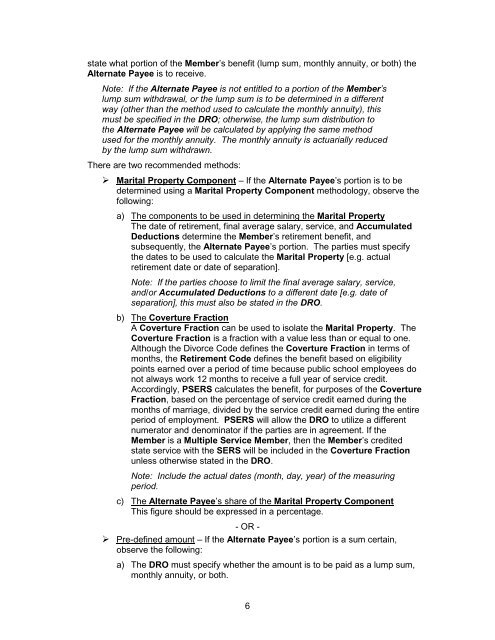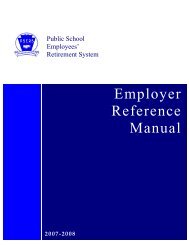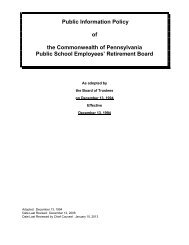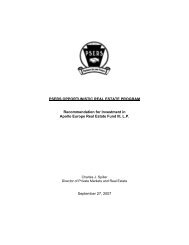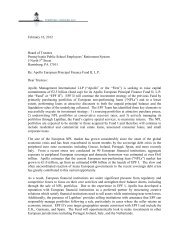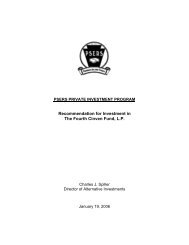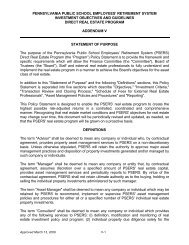Divorce Guidelines.indd - PSERs
Divorce Guidelines.indd - PSERs
Divorce Guidelines.indd - PSERs
Create successful ePaper yourself
Turn your PDF publications into a flip-book with our unique Google optimized e-Paper software.
state what portion of the Member’s benefit (lump sum, monthly annuity, or both) the<br />
Alternate Payee is to receive.<br />
Note: If the Alternate Payee is not entitled to a portion of the Member’s<br />
lump sum withdrawal, or the lump sum is to be determined in a different<br />
way (other than the method used to calculate the monthly annuity), this<br />
must be specified in the DRO; otherwise, the lump sum distribution to<br />
the Alternate Payee will be calculated by applying the same method<br />
used for the monthly annuity. The monthly annuity is actuarially reduced<br />
by the lump sum withdrawn.<br />
There are two recommended methods:<br />
‣ Marital Property Component – If the Alternate Payee’s portion is to be<br />
determined using a Marital Property Component methodology, observe the<br />
following:<br />
a) The components to be used in determining the Marital Property<br />
The date of retirement, final average salary, service, and Accumulated<br />
Deductions determine the Member’s retirement benefit, and<br />
subsequently, the Alternate Payee’s portion. The parties must specify<br />
the dates to be used to calculate the Marital Property [e.g. actual<br />
retirement date or date of separation].<br />
Note: If the parties choose to limit the final average salary, service,<br />
and/or Accumulated Deductions to a different date [e.g. date of<br />
separation], this must also be stated in the DRO.<br />
b) The Coverture Fraction<br />
A Coverture Fraction can be used to isolate the Marital Property. The<br />
Coverture Fraction is a fraction with a value less than or equal to one.<br />
Although the <strong>Divorce</strong> Code defines the Coverture Fraction in terms of<br />
months, the Retirement Code defines the benefit based on eligibility<br />
points earned over a period of time because public school employees do<br />
not always work 12 months to receive a full year of service credit.<br />
Accordingly, PSERS calculates the benefit, for purposes of the Coverture<br />
Fraction, based on the percentage of service credit earned during the<br />
months of marriage, divided by the service credit earned during the entire<br />
period of employment. PSERS will allow the DRO to utilize a different<br />
numerator and denominator if the parties are in agreement. If the<br />
Member is a Multiple Service Member, then the Member’s credited<br />
state service with the SERS will be included in the Coverture Fraction<br />
unless otherwise stated in the DRO.<br />
Note: Include the actual dates (month, day, year) of the measuring<br />
period.<br />
c) The Alternate Payee’s share of the Marital Property Component<br />
This figure should be expressed in a percentage.<br />
- OR -<br />
‣ Pre-defined amount – If the Alternate Payee’s portion is a sum certain,<br />
observe the following:<br />
a) The DRO must specify whether the amount is to be paid as a lump sum,<br />
monthly annuity, or both.<br />
6


